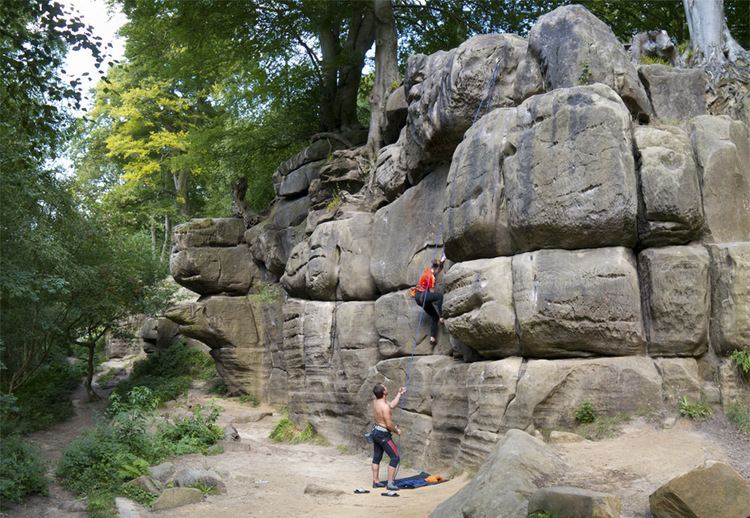 | ||
Climbing at harrison s rocks short film
Harrison's Rocks is a sandstone crag approximately 1.5 kilometres (1 mi) south of the village of Groombridge in the county of East Sussex. The site is a notable example of a periglacial tor landform developed in rocks of the Tunbridge Wells Sand Formation. It is popular with rock climbers, and is the largest of the cluster of local outcrops known by climbers as Southern Sandstone.
Contents
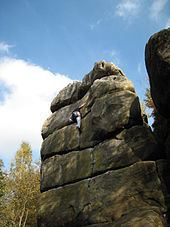
Harrison's Rocks is owned by climbers and is managed on their behalf by the British Mountaineering Council with funding from the English Sports Council.
Geology
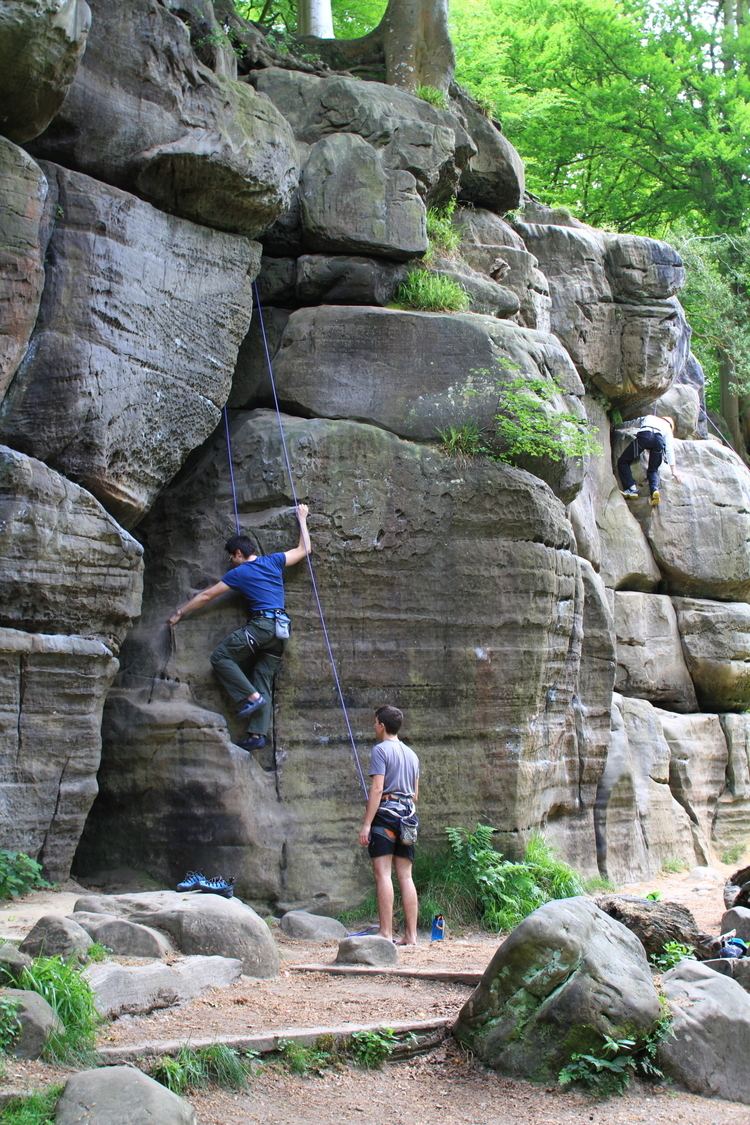
Harrison's Rocks are a notable example of a periglacial tor landform, developed in rocks of the Tunbridge Wells Sand Formation of the Wealden Supergroup of early Cretaceous age. Harrison's Rocks is composed of a soft sandstone, which is prone to being worn away.
Climbing
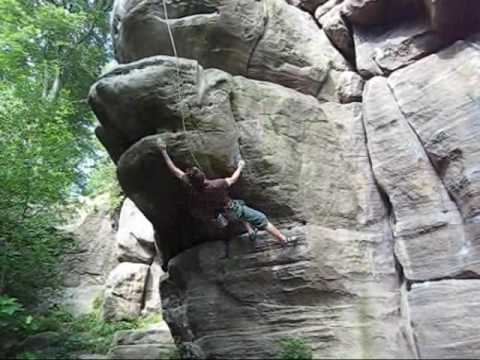
Harrison's Rocks is owned by climbers and is managed on their behalf by the British Mountaineering Council with funding from the English Sports Council.
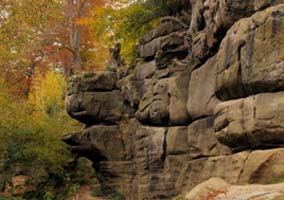
There are approximately two hundred short climbs at Harrison's Rocks, ranging widely in difficulty. Climbing is exclusively protected by means of a "top rope". This is the same as at all Southern Sandstone outcrops. Lead climbing is prohibited for two main reasons. Firstly, it is dangerous because the rock is too friable; any gear placed in the sandstone cracks would easily rip out in the event of a leader fall. Lead-climbing is also discouraged for reasons of conservation - it is unacceptable for climbers to risk further damage to the thin rock crust on the surface of the crags. Unconsolidated and friable sand lies beneath this crust. Deep rope-grooves can be seen in places at Harrison's Rocks and are testament to the fragility of the rock. All of the climbs are quite short, with the highest at approximately 30 feet (9 m) and the lowest at 15 feet (5 m). Most climbs have a ring drilled and set into the rock at the top for setting up a top rope, but some rely on the use of tree trunks for protection.
Filming
In 1981, Doctor Who was filmed at Harrison's Rocks. It was Peter Davison's first transmitted story "Castrovalva"
